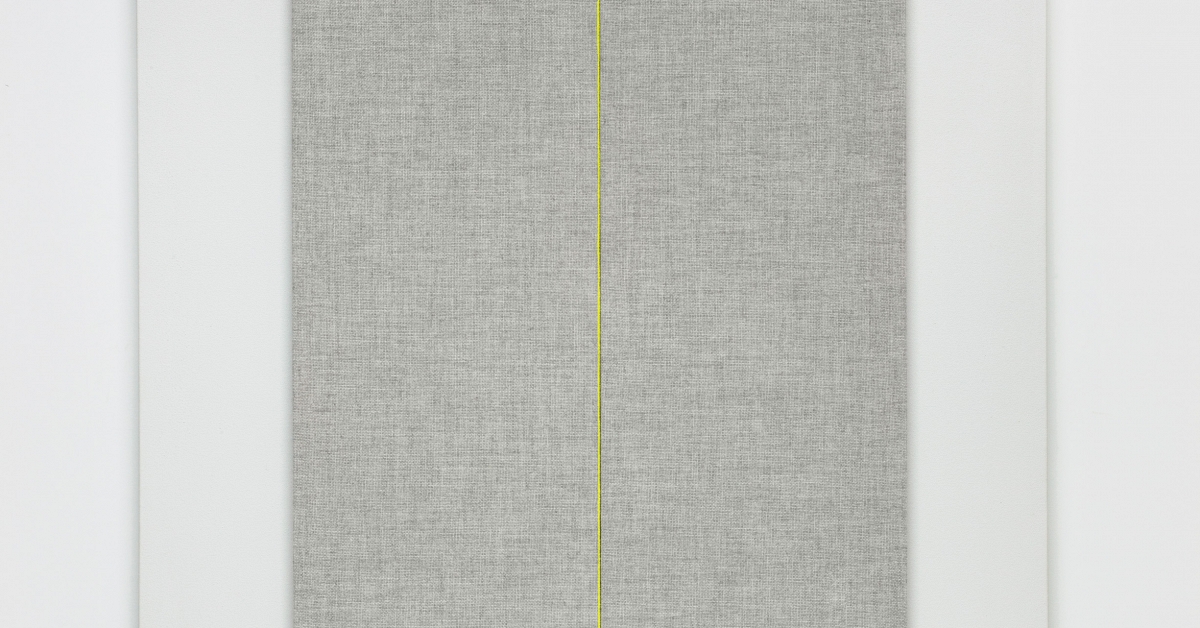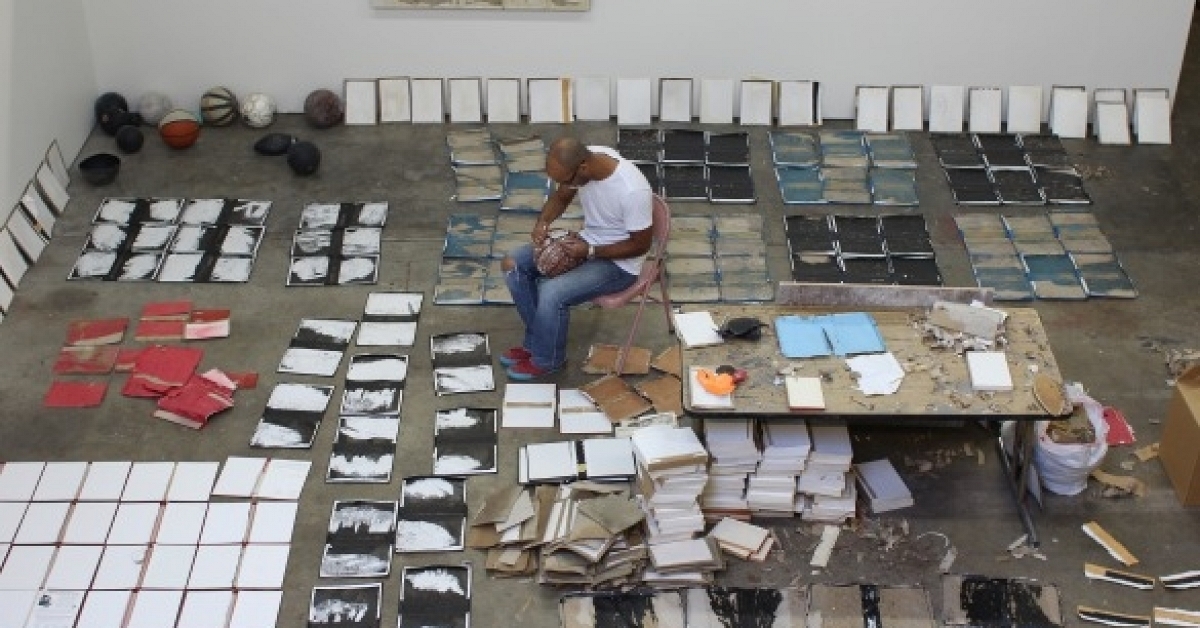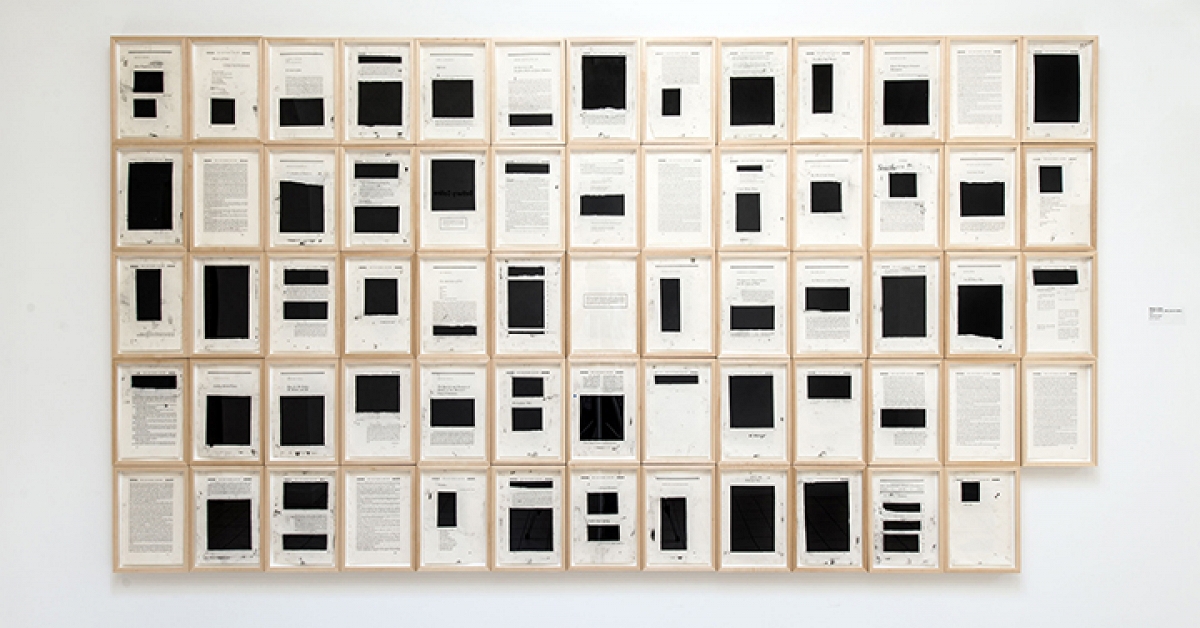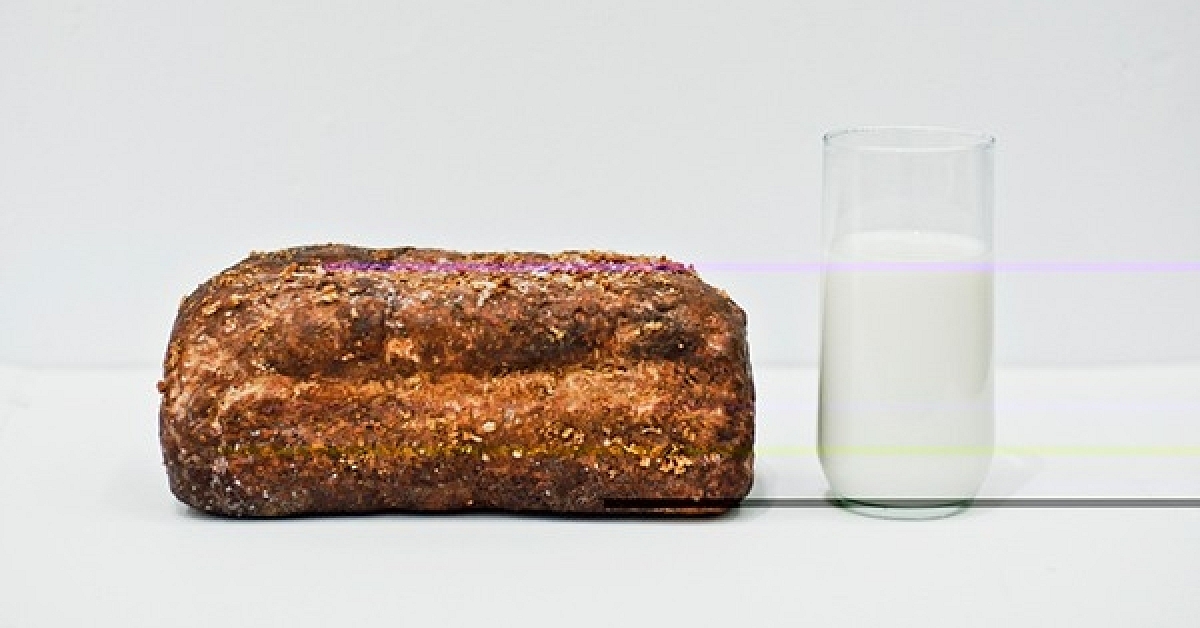Review: Works of Defiant Beauty (Samuel Levi Jones)
Los Angeles Times / Nov 26, 2014 / by Leah Ollman / Go to Original
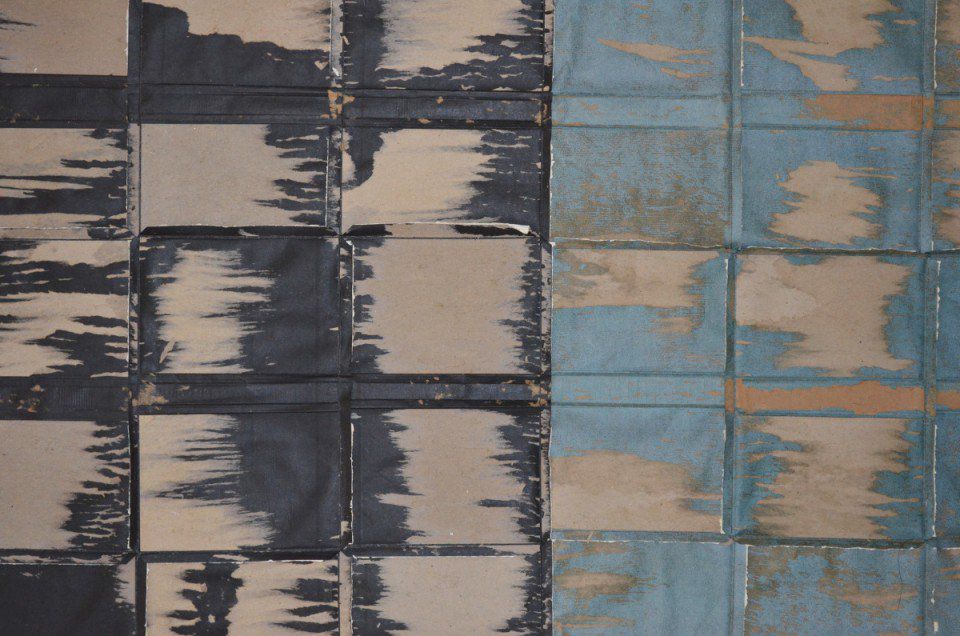
Riveting new work by Samuel Levi Jones, at Papillion, is hot and cool at once, the result of aggressive action as well as a deliberate, formal intelligence.This isn’t the only polarity at play. Jones generates several different varieties of friction, all of them fueling the work’s quietly rumbling charge.
Based in the Bay Area, Jones practices a kind of muscular abstraction bolstered by conceptual heft. He tears the covers off encyclopedias and reference books and stitches the surfaces (face-in) together in grids, which he then mounts on canvas.
The skins of the books are scarred by the violation: Shreds of the cardboard used in binding cling to the fabric, and edges run raw. Many of the works resemble the unfinished backs of quilts, all exposed seams and loosely hanging marginal material.
“Hematoma” (71 by 59 inches) is divided vertically, the left half an amalgam of black book covers and the right side slate blue. The grid structure emanates an air of order and regularity, while each individual component, each damaged relic, testifies to a dynamic act of force and disruption. Every cover is its own distinct landscape of ruin, scabbed and scraped. The titles of the books are barely visible: “The Annals of America” and “World Book.” In rending and flaying these particular volumes, Jones symbolically dismantles their ostensible authority.
His protest is a general one against, it seems, such totalizing histories, with their partial perspectives and gross exclusions. By not taking more specific aim, Jones lets formal qualities — visceral immediacy, textural complexity and damage-driven process — carry the bulk of the work’s metaphorical weight.
One stunning monochrome piece, a neat grid of Encyclopedia Britannica covers, all dilute rust, brings to mind the post-minimal, sallow resin grids of Eva Hesse, as well as the evacuated library conjured in Rachel Whiteread’s Holocaust Memorial in Vienna.
These pieces also tap into a history of scrap-built textiles, and notably, the tradition of found-object assemblage. Such sculptural repurposing has an affecting temporal dimension, a vague aroma of the past inflecting the sensory mix.
Jones received this year’s Joyce Alexander Wein Artist Prize, a major recognition from the Studio Museum in Harlem, where he will have a solo show in 2015.
His work has integrity, not just in the sense of authenticity but also internal consistency. The physical gestures of its making, the notion of empowerment at its core, and its tremendous tactile vigor are all mutually reinforcing. Evocations of the body, too, are manifold: bodies of knowledge, bodily injury, disembodied skins. Jones harnesses the twin forces of destruction and creation to generate these works of defiant beauty.
Papillion, 4336 Degnan Blvd., (323) 642-8402, through Jan. 4. Closed Monday and Tuesday. www.papillionart.com

